I haven't had time to put together a full AAR of this class, but I want to get a thread started. I'll be back over the next few days to provide additional details.
The class was held at the Drake Landing facility in Fuquay-Varina, NC. (Between Fayetteville and Raleigh.)
While this is just a starter for the AAR, I'd like to say that the class was excellent. It exposed me to material and situations that I've never encountered before. It was very tough, very physical, and I am very tired and sore at this point. But I learned a tremendous amount about my capabilities and limitations, and enjoyed every minute of it.
It was a great class, with a great instructor and a great group of guys. More to come later, but I wanted to at least get an AAR started so other attendees could share their thoughts.
Here’s my full AAR – sorry for the delay…
General Info
The class was taught by Southnarc. (Hereafter referred to as “SN” for brevity.) More information on his bio and additional training offerings can be found at www.shivworks.com. The course syllabus is available on his site, and it is also available on this site in the original course announcement. In addition to class descriptions and other training materials, the Shivworks site offers a number of items of interest to those who are “discreetly armed.”
The class was organized and hosted by Grey Group Training. Full disclosure – while I am not affiliated with Grey Group, I am a mod on M4Carbine, and Grey Group has a dedicated space here. Having said that, it is my observation that Grey Group is rapidly becoming a “one stop shop” for the delivery of high quality training by a number of highly respected instructors in various disciplines. Several of the folks from Grey Group were onsite at various points during each training day, checking on class progress and conditions, and taking photos and video. (Much of which is included in this AAR thread.)
Range facilities were made available by Drake Landing in Fuquay-Varina, NC. (A short drive from Fayetteville.)
Safety
SN provided one of the most comprehensive “preflight” safety briefings of any class I have attended outside of Todd Green’s Aim Fast Hit Fast courses. Attendees with medical training (there were several in the class) were identified prior to the first live fire session, and were assigned the duty of responding to and stabilizing any significant injuries while EMS personnel were in route. Basic safety, covering the four rules, was discussed with all attendees. A designated evacuation vehicle (a student’s pickup) was parked at the range, away from other vehicles, with a key in the ignition and a medical kit in the bed of the truck. GPS coordinates for the range were noted and placed with the medical kit in the event that they were needed.
For non-live fire, close contact work, all students removed any live weapons (guns, ammo, blades), kept eye-pro on, and used cups to protect “sensitive areas.” Students directly involved in drills using simunitions also wore FIST helmets and any other protective clothing desired. Sim work was conducted in an area separated from the firing range.
TD1 (Friday night)
Friday night was dedicated to discussion of the criminal assault paradigm, management of unknown contacts and a lot of work on some basic techniques related to default defensive positions and body positioning/footwork that would be needed through the remainder of the course. While I won’t go into every detail of each topic (note that many details are available in the PSP’s that SN links on his website), I’ll take a moment to give a brief review of each area:
Criminal Assault Paradigm
Essentially, a discussion on how criminals select a victim, and how they operate once selection has occurred. While much of this is likely well known to the LEO’s among our membership, it is something to which “average Joe” probably has not given too much thought, and it is not a focus of most firearms training courses. SN went into great detail, based on both personal experience as a LEO and based on his observation of many hours of robbery/assault video footage. We spent quite a bit of time discussing behaviors that tend to mark an individual for selection by a criminal, as well as subtle behavioral queues (“tells”) that criminals tend to exhibit when an assault is about to be initiated. SN also provided numerous examples of ruses often used by criminals to get within striking distance without raising suspicion.
In addition to the above, SN presented some very enlightening demonstrations to illustrate the value of space/distance when dealing with a contact. The demonstration very clearly illustrated just how much very small differences in contact distance can increase or reduce one’s ability to react to a threat. While I suspect everyone reading this understands that as you get closer to a contact, you have less time to react to his actions, it’s hard to get a feel for what this actually means in terms of time/distance until you actually see an example in front of your face. SN’s demonstration illustrated this very clearly.
Management of unknown contacts was covered extensively, and this skill would be used over and over throughout the weekend. In essence, anyone unfamiliar to you should be considered an unknown contact. While most simply pass by on the street, oblivious to you, the focus of the lesson was on dealing with those who take an interest in you – whether it‘s a panhandler or someone asking for assistance. Students were shown a method for managing these contacts that started with simple, non-threatening requests to maintain distance and escalating to stronger language and strikes as necessary. We spent quite a bit of time drilling with various partners to gain confidence in contact management, as well as recognition of “tells.” (General note – throughout the weekend, SN did a very effective job of regularly forcing students to switch partners numerous times within a given drill. This allowed (forced) people out of their comfort zone, and made them deal with partners who in some cases were far larger, stronger and faster.)
In addition to the above, we also spent time discussing and drilling a “default position.” By “default position,” SN is referring to a defensive posture that is very fast, easy and instinctive to assume in the event that an attacker gains the element of surprise and is able to execute a preemptive strike. The intent is not to remain in this position for the duration of an assault. Rather, it is intended to allow you to quickly protect your head, neck and face in order to avoid losing consciousness or being knocked to the ground at the onset of an unanticipated assault.
TD2 (Saturday)
The format for both TD2 and TD3 was live fire in the AM, and close contact work with simulated weapons in the afternoon.
TD2’s live fire started with a basic assessment by SN of the shooting skills of the attendees. Specifically, he focused on the drawstroke and presentation used by the students. To be clear, this was not a shooting class. The focus was not so much on learning to shoot, as on learning to handle and control a weapon in very close proximity to an adversary. To this end, SN guided students through a very specific four count drawstroke with an emphasis on being able to fire effectively from any position following the initial draw. (Of course, the distance from the adversary determines the distance to which the gun is extended.) The core lesson was that one’s drawstroke should be applicable whether the adversary is 15 yards away and needs to be engaged with an accurate headshot from a classic isosceles position, or whether you are in the confines of a vehicle, controlling an assailant’s weapon with one hand as you draw and fire your own from retention with the other.
General note – throughout the weekend, a core emphasis was placed on the importance of simple, repeatable techniques that have wide applicability. SN noted that he steers strongly away from methods that require a great deal of complex decision making under short timeframes and life-threatening situations. (No “if he does this, then I do that. But if he does that, then I do something else. And if he does yet a third thing, then I have to do xyz…”)
TD2 – Afternoon drills
Close contact – ways to stay on your feet and maintain or gain control once entangled with adversary, denying him space to operate while creating enough space for yourself to enable deployment of a weapon. If taken to the ground, ways to maintain enough space to either get to your feet and escape, or access a weapon and end the threat. TD2 dealt with single adversaries only. As we evolved into the used of sim guns (G17’s), the importance of one’s drawstroke technique came into play. Specifically, these scenarios required one to fire from a position of retention, and the importance of keeping the weapon tucked very close to the body, firmly under control and away from the assailant became readily apparent. Students got to experience firsthand the importance of consistent drawstroke, and using body positioning to direct the weapon, rather than extending it into the reach of the adversary.
TD3 (Sunday)
TD3’s live fire built upon the drawstroke practiced the previous day. We incorporated two guard positions for use in situations when the gun is out but physical contact with the assailant is still imminent. (These positions were derivatives of the “default” position trained on TD1.) We ran through numerous drills to illustrate the “flow” of the drawstroke from retention to extension and back as one moves closer to or further from the assailant. Heavy emphasis was placed on being able to fire accurately from any position within the drawstroke, with the amount of extension being determined by one’s proximity to the assailant. (One is obviously not going to go to full extension when the assailant is close enough to touch, but may need to extend out to make an accurate shot on a small target as distance increases.)
In addition to the more traditional range work, we also ran through a few live fire scenarios. In the first, we simulated sitting at a table in a very crowded area (numerous people crowding us from the sides and back, pressing us into the table). The emphasis was on being able to smoothly draw and deploy a weapon in very tight confines while not allowing the crowded conditions or the presence of the table to foul the draw. The drawstroke trained previously lent itself well to these conditions.
The second scenario involved engagement of external targets from within a vehicle. SN stayed in the passenger seat and coached each student through the scenario. Students were forced to start from a belted position, then draw and engage targets out the driver and passenger sides, and then had to exit the vehicle to engage additional targets. It was FAR less simple than “shoot them, get out of the car, shoot them some more.” There were a number of intricacies involved in manipulating within such a tight space, working mechanisms in the car, and engaging targets without shooting the passenger, sweeping and shooting oneself, and getting trapped by the door while exiting. SN did a very good job explaining the basic techniques of moving within and shooting quickly from a vehicle, then coached each student through the live run.
TD3 – Afternoon drills
The pace of training was a little less intense (more rest time in between heavy exertion because students were starting to wear down physically), but the scenarios themselves were far more intense/difficult than the previous day. More on the scenarios in a moment…
The afternoon session on TD3 also included time spent on weapons retention and on recovery/disarms. Specifically, the weapons retention techniques were intended to allow one to retain a weapon (whether holstered or drawn) while a larger, stronger individual is attempting to take it. These techniques placed a heavy emphasis on body positioning rather than brute strength, making them applicable to someone fighting against a larger, stronger individual. I will say that I am quite a bit heavier than SN. However, he was able to very effectively weld himself to me while I slung him around in multiple directions trying to grab a gun which never budged from his wasteband.
As mentioned above, scenarios on TD3 proved to be much more intense than TD2. All were designed to put the “victim” at a significant disadvantage and force him to deal with the problem. None were scripted – the scenario played out according to the role players’ imagination and decisions. While certain constraints were laid (have to stay in the confines of a certain area, you knew how many adversaries you’d face), there was no script to how the assailants had to behave, and how the victim had to respond.
Scenario #1
The first scenario required the victim to deal with two assailants. Skills in managing unknown contacts were used heavily. As there was no script, the level of aggression and speed of closure exercised by the assailants varied widely. The basic setup was that a victim was approached by an unknown contact. At some point in the scenario (determined by SN), a second unknown contact was introduced. Neither assailant had a sim gun. Everyone in the class got one turn as the victim, and two turns as the assailant. The scenario ended at a point determined by SN. (No set time limit, no specific action automatically ended the scenario, with the exception of safety issues such as a FIST helmet being ripped off while sim guns were in use.) In some cases, the scenario continued even after a party was shot – you don’t always get a one shot stop, right? Immediately following the scenario, the victim was debriefed by SN and asked to describe what he saw, how he reacted, and how he made certain decisions. The debrief was very interesting to watch, as there were numerous cases where a student’s recollection of the scenario was clearly different from the scene as observed by the rest of the class. One very capable student had a gun drawn and ready to deploy, but failed to use it as an assailant crashed into him. He managed to escape, but still failed to use the weapon, and was then taken to the ground by both assailants. When debriefed, he thought he only had the weapon out for an instant, but it was clear to the class that he had several seconds (3-4) after having drawn the weapon to make effective hits on the assailant at a range of a few yards. He could not remember having this much time, and couldn’t recollect the details of the encounter. (He did not realize that he had escaped once, and then failed to use his weapon.) This illustrated a few things:
- Under that kind of pressure, it’s very difficult to keep a clear head and make rapid decisions.
- It’s very difficult to recollect the specific details of the event in the immediate aftermath. This underscores the importance of not spewing information when the authorities arrive in the aftermath of a self-defense incident. The student described above was giving out inaccurate information during the debrief not through malicious intent, but because the stress of the event (both physical and mental) was so intense that he simply couldn’t get the details right in its immediate aftermath.
I was not the first “victim,” and had the opportunity to view a few scenarios and learn quickly before my turn came. When I played the role of the victim, I made a concerted effort to move quickly to prevent the assailants from flanking me, and to keep them in a line in front of me. Once it because clear that I was facing two larger assailants who were moving aggressively to flank me (having the obvious potential and apparent intent to cause me great harm), I preemptively placed my hand on my weapon. As the advance continued, I drew the weapon, continued to back away as the assailants (now knowing I was armed) continued to advance. I warned the primary assailant that I would shoot him if he approached any closer. Upon his next step toward me, I shot him in the chest, and then immediately shifted to the second assailant and shot him in the chest as well. I continued to back away, ordered them to their knees, simulated dialing a cell phone, and the scenario ended.
Takeaways for me:
- The rapid circling was of great benefit in keep the assailants from outflanking me.
- Once your hand is on the gun and the assailants know you’re armed, you’d better be prepared to deploy the weapon fast, before they can take you to the ground.
- I believe I was completely justified in shooting the first assailant. But the shot to the chest of the second assailant was reactive – like I was shooting steel. I believe that would have been a trouble spot for me in an actual incident. The second assailant stopped his advance as soon as he saw me shoot the first. I believe I should have transitioned to the second assailant and evaluated whether he was still advancing. If he was still advancing, he should have been shot immediately. Since he had stopped advancing, I should have assessed, ordered him to the ground, and shot him only if his aggression continued.
Scenario #2
The second scenario consisted of a hitchhiking scenario (Grey Group obtained an old “beater” pickup truck for use in this sceanrio) in which the driver was robbed at gunpoint by the hitchhiker. Both parties were armed with a sim gun. The key takeaways for me were as follows:
- It is easy to become so fixated on controlling one weapon that you can easily forget the presence of other weapons. While playing the hitchhiker, I was shot by my victim (using his gun), as we grappled for mine.
- The key to victory in this scenario was to violently deny operating room to the adversary. When playing the victim, I won by forcefully driving the robber into the passenger door and pinning him there without warning, then drawing my gun and shooting him multiple times while my support hand pinned his weapon to the seat.
Other Thoughts/Observations
This class was not easy. It was definitely the most physical class I've taken. I'm pretty banged and bruised up right now, and marked up nicely from the sim rounds. Limping a little from a swollen knee, and my hands are in rough shape from all of the weapons retention and disarms we worked on. Fortunately for me, the marks on my forehead are covered by my hairline. Vitamin “I” and Neosporin were, and still are, close friends of mine. It was an outstanding class. I'd say it was one of the most relevant classes I've taken in terms of the circumstances of my daily carry. A few key take-aways for me:
- Victory nearly always went to the party who initiated the action, and did it fast. Letting the other party set the rules (whether you are the victim or the criminal) nearly always resulted in failure. If you were the "victim," initiating the move might have meant running away, or it might have meant preemptively establishing a grip on a weapon and circling to keep adversaries off balance and strung out in a line rather than allowing them to flank you. Regardless of the problem solution, if you waited for violence to come to you before acting, you were hosed. Once “it’s on,” don’t wait around for the other party to bring the fight to you. Make a decision and act on it right now.
- Denying space to the adversary was a key factor in victory. This could have meant pinning him to the inside of a car door while you accessed a weapon, or using the ground or your body to restrict his ability to move to access or use a weapon. If you can't be a long way away from the adversary, you're better off being right on top of him, smothering him while you access a weapon or take some other action to end his ability to hurt you. Being within his striking distance, but not close enough to control him, is a virtual guarantee of failure.
- Violence ruled the day. The more violent you could be, the more likely you were to be successful. "What can I smash next?" Of course, you're a little limited as to how much smashing you can do on your training partner. I tried to stay cognizant of opportunities to break knees and elbows, and to crush eyes, throats and nuts. Couldn't do it in class, but they're all targets.
- Personal fitness cannot be overstated. I've never been a believer in the "I don't need to be in good shape because I carry a gun" BS. This class proved it for me. If you can maintain distance from the threat, you can rely on skill with a weapon. But once the distance closes and you’re tangled up with an assailant, strength and speed are hard to overcome. The ability to deliver smashing violence was heavily tied to strength and speed. Just a little motivation to keep going when I'm puking in the gym at 5:45AM before work…!
- While I’ve been carrying AIWB for a number of years now, I was able to put my method of carry through a much harsher test. I was very pleased with my ability to access the weapon under adverse conditions.
Throughout the duration of the class, I found SN to be an extremely personable, effective instructor. He presented material in a way that was easy to understand, and did a fantastic job circulating, observing and correcting. He was very quick to stop the class and demonstrate when a good teaching point came up during a drill, and he answered questions tirelessly. I found him to have an extremely effective style of instruction.
Grey Group did a very nice job organizing the class, sending out communications in advance, and being on hand to check on class conditions as training progressed. They were also very quick to obtain needed items on short notice (such as the pickup truck used in TD3 scenarios).
Long story short, I gained a lot from the class. I'd do it again in a heartbeat - I just need a few days to recuperate first! I understand that Grey Group is going to have him back in 2011, and I look forward to the opportunity to attend again.
A couple of active duty Army guys were in attendance. It was a pleasure to train with you - thanks for the opportunity to meet you, and thank you for your service to our Nation.
Whether or not you regularly carry a concealed weapon, if you choose to go about life understanding that you might be the target of a criminal attack and want to better recognize it, avoid it or deal with it if unavoidable, you owe it to yourself to take this class.



 Reply With Quote
Reply With Quote

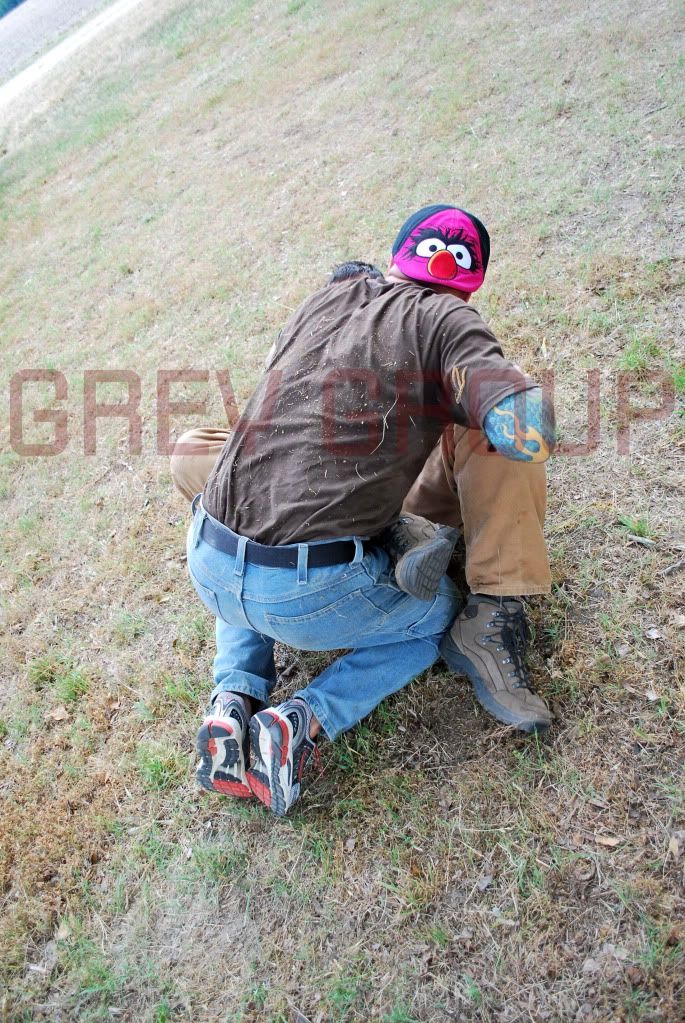
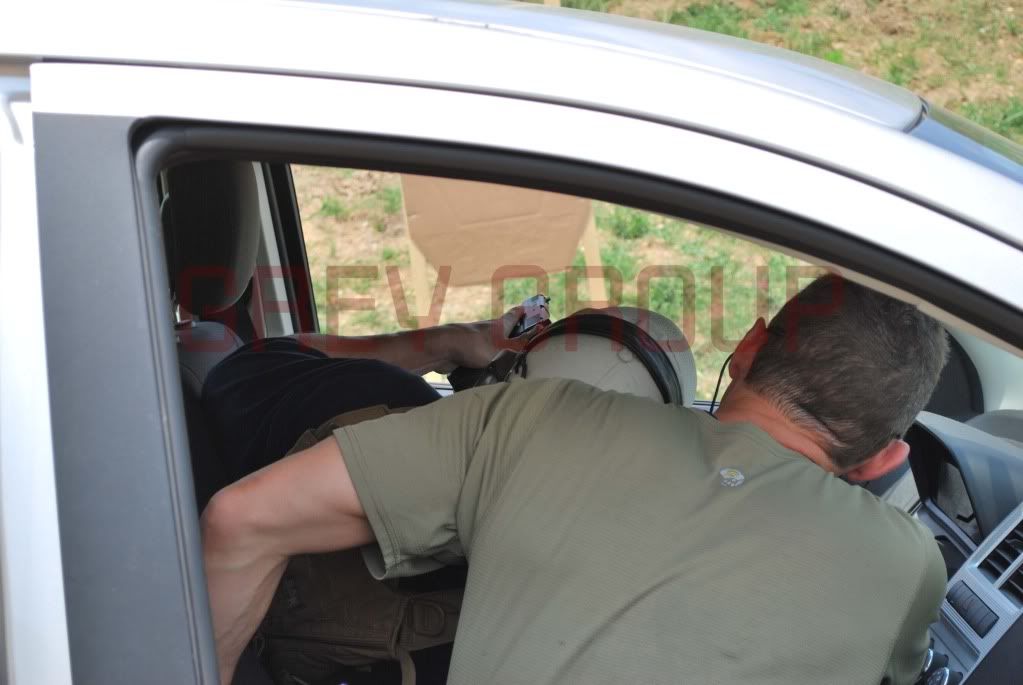
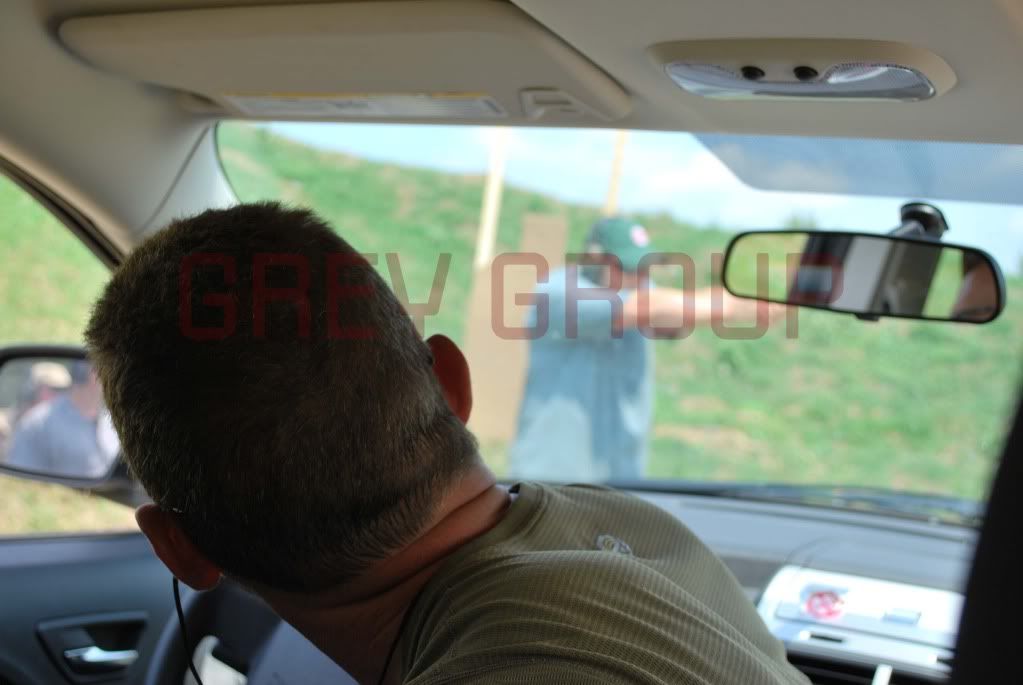
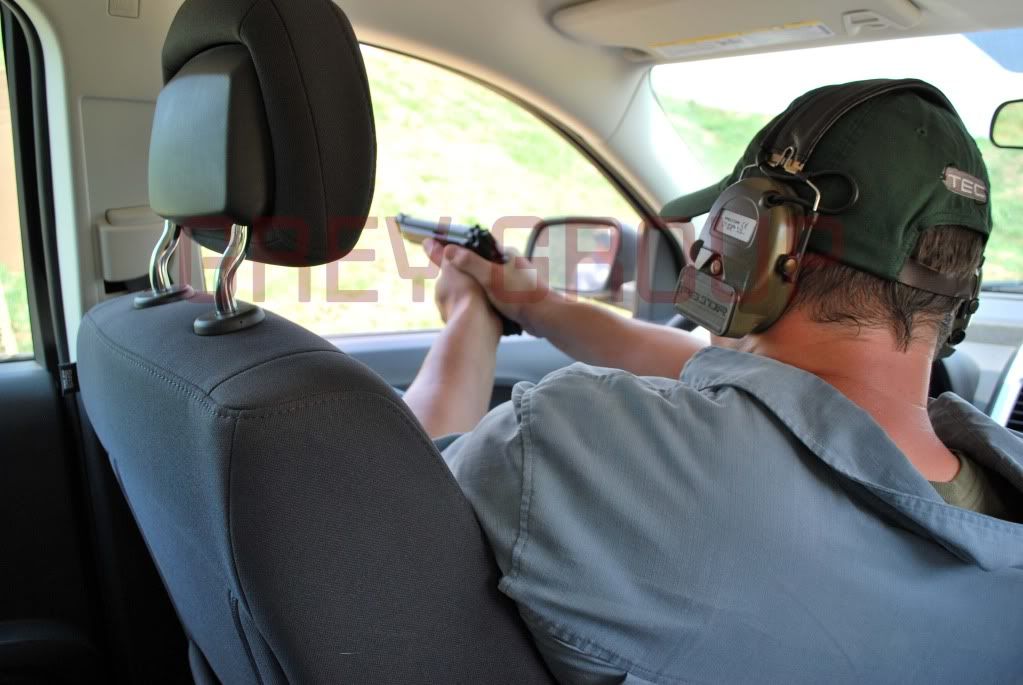
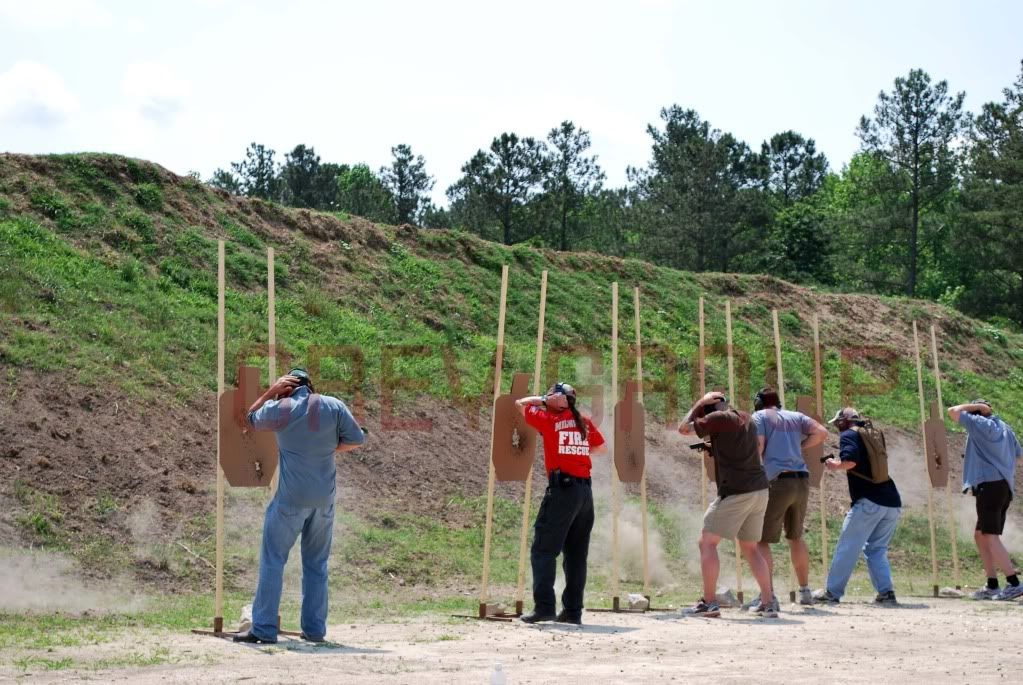
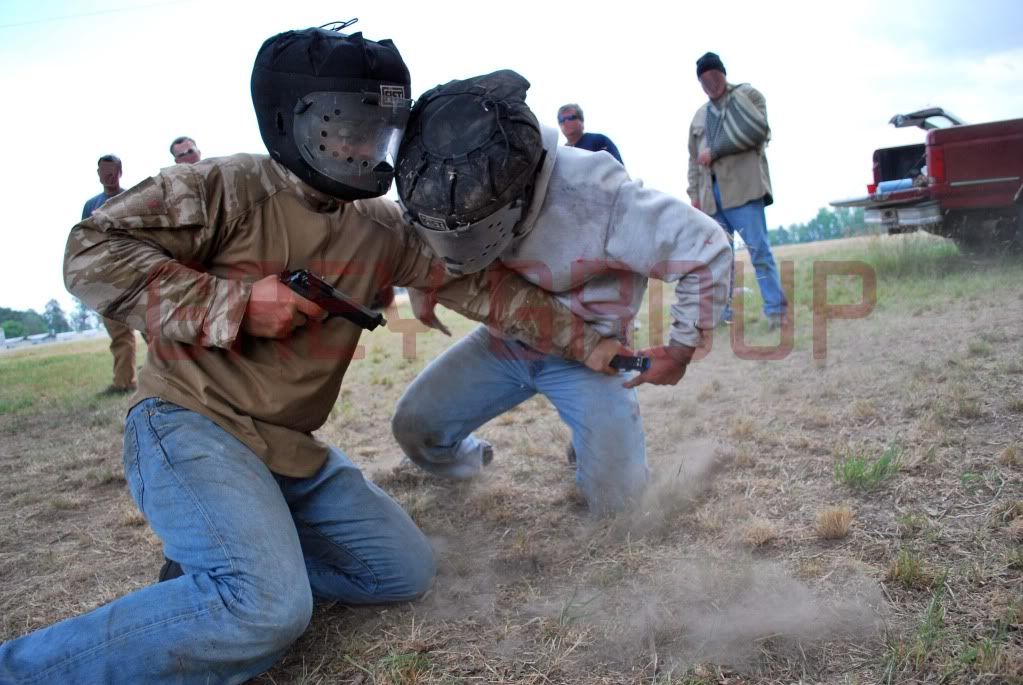











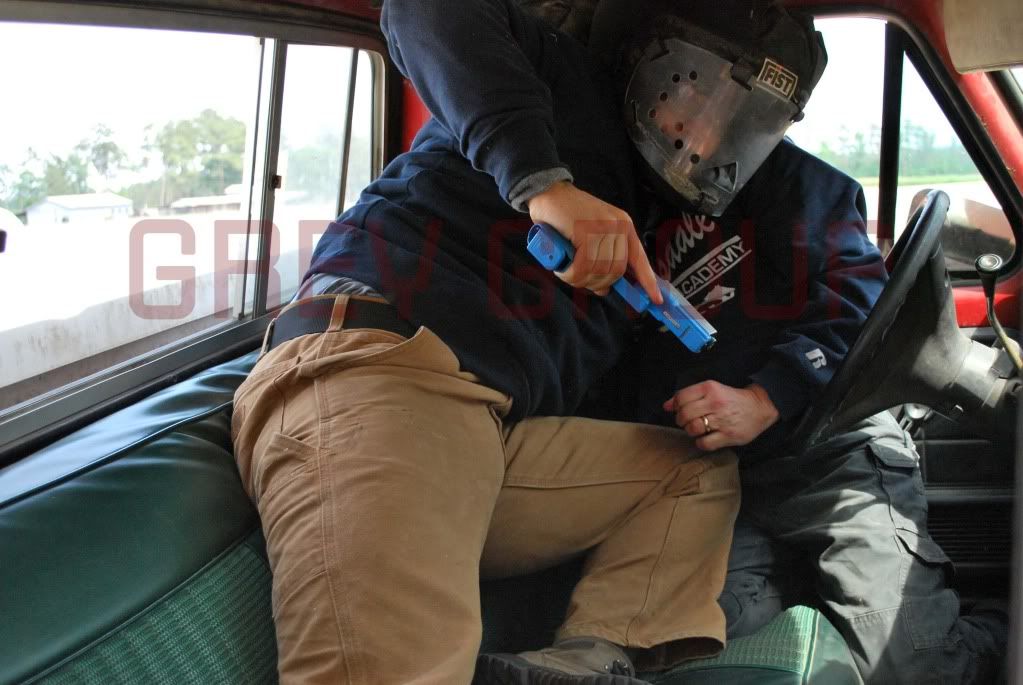




Bookmarks